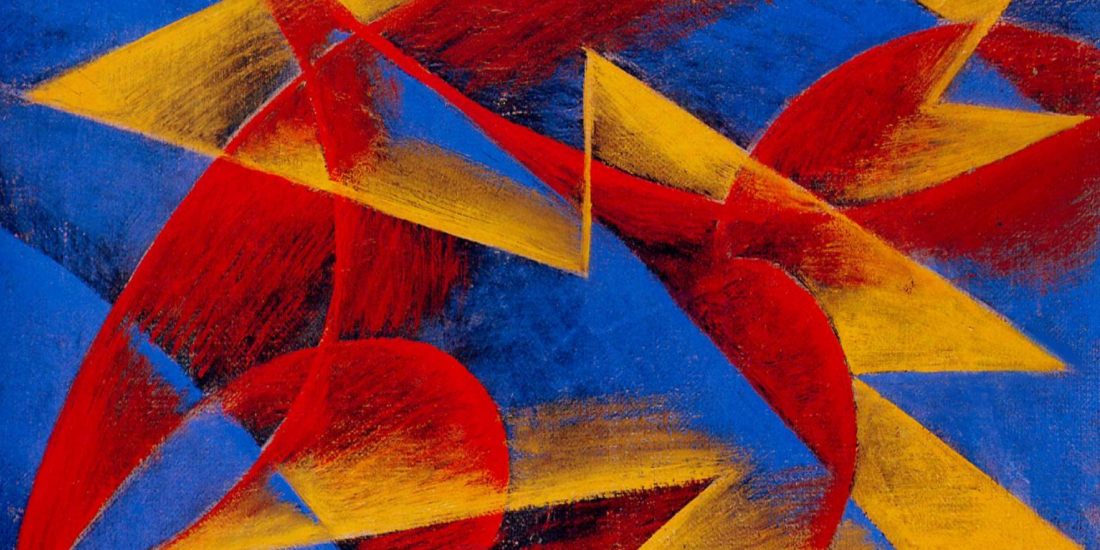
Giacomo Balla's infinite light: Parma hosts a major exhibition on the creative universe of Futurism
Jayde BrowneShare
From October 10th to February 1st, Parma will host one of the most important retrospectives dedicated to Giacomo Balla: over sixty works, all from the Galleria Nazionale d'Arte Moderna e Contemporanea in Rome, will enliven the spaces of the Palazzo del Governatore with a journey that narrates like few others the revolution in Italian painting between the 19th and 20th centuries. "Giacomo Balla, a Universe of Light" is more than an exhibition: it is a journey through decades of creativity, research, and experimentation by an artist who transformed the theme of light into a universal language and an inexhaustible source of inspiration.
This exhibition is the result of a collaborative effort involving prestigious scholars and institutions, curated by Cesare Biasini Selvaggi and Renata Cristina Mazzantini, and supported by the Cariparma Foundation, the Emilia-Romagna Region, and the Solares Fondazione delle Arti. The project's core is the substantial body of work left by Elica and Luce Balla, the artist's daughters, enriched by a selection by Maurizio Fagiolo dell'Arco in collaboration with Elena Gigli. For the first time, the most comprehensive public collection on Balla's career leaves the capital to tell its full story, offering the public a historic and unique opportunity.
It begins with the era of social realism and pointillist art, with examples such as "Nello specchio," a collective portrait punctuated by literary references that even captivated Giacomo Puccini, who was eager to acquire it. The exhibition unfolds through thirteen rooms, following both a thematic and chronological thread: from rapid sketches for the "lamb queues" in war-torn Rome to scenes of urban humanity immortalized with a sympathetic gaze in the early twentieth century. Light, explored as a physical and metaphysical phenomenon, permeates every phase of Giacomo Balla's work, becoming the subject, object, and metaphor of his painting.
Traces of the artist's passion for the new, transforming society are evident: in the "Dei viventi" (Living Gods) cycle, Balla approaches the theme of the underprivileged, the poor, and the marginalized with both an anthropological and lyrical eye, restoring to the protagonists of a society in turmoil a dignity and presence unprecedented in Italian painting. Particularly moving is the painting "La Pazza" (The Madwoman), which offers a moving and unsettling portrait of mental illness, highlighting the artist's ability to push the boundaries of human emotion.
The impulse toward experimentation emerges from the sketches for "Fallimento" and the famous "Iridescent Interpenetrations," true optical-dynamic laboratories in which Balla anticipated the path toward abstraction that would characterize part of his Futurist career. His gaze on reality became increasingly analytical, culminating in the invention of a new visual alphabet to describe the contemporary, speed, and energy. An extraordinary example in the exhibition is the drawing "Line of Speed + Space," a visionary attempt to give graphic form to the vortex of modern transformation.
The section dedicated to the Futurist period is enriched with studies, sketches, and masterpieces such as the sketches for "I ritmi dell'archetto" and "Le mani del violinista," reminiscent of experiences in Turin and his friendship with Cesare Lombroso, but above all a manifesto of a painting capable of "rendering the substance of a phenomenon as evanescent as the rainbow," to use the words of Fagiolo dell'Arco. Balla transformed his explorations of light and color into abstraction, creating the very first experiments in optical and dynamic decomposition in Europe.
The artist's patriotic streak, evidenced by the "Interventionist Demonstrations" cycle, is not overlooked, as is his attention to the social dynamics and emergency scenarios of Rome during the Second World War. The painting "The Queue for the Lamb" offers a vivid glimpse into the Italian urban crisis, observed from the window of Balla's Roman home.
The exhibition culminates with the artist's most mature and still lesser-known phase: the period in which, from the 1930s onward, his painting evolved, drawing inspiration from fashion photography, cinema, and the study of nature in Rome's parks and gardens. Balla remained faithful to his love of light, which shaped his images like the lifeblood of his life, even in the most intimate moments of his life.
The exhibition is complemented by a rich array of period photographs, historical documents, and materials from the Gigli Archive, reconstructing the artist's cultural, family, and intellectual context. The sequence of rooms illustrates the stylistic evolution and consistency of a figure who was always in step with the avant-garde, while remaining faithful to a lyrical and emotional vision of painting.
This journey through light, speed, and perception, physical energy and spirituality, offers the public the opportunity to discover the "Leonardo da Vinci of the twentieth century," an artist who oscillated between the reality of the street and the abstraction of dreams, accompanying Italian painting in one of its most vibrant periods. The Parma event thus promises to be a fundamental step in exploring the history of Futurism, Balla's work, and its infinite metamorphoses, between art and science, social analysis and modernity.
